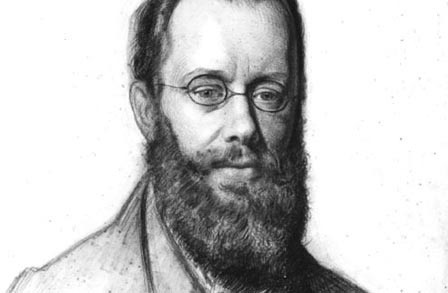Edgar Allan Poe- Edgar Allan Poe was born in Boston, Massachusetts on January 19, 1809 to late professional theatre artists. John Allan, a wealthy tobacco exporter, and his wife Frances raised him in Richmond, Virginia where he attended the best boarding school and the state University. He soon moved to Boston and joined the Army. His first collection of poems was published in 1827, followed by his second book in 1829. Poe began writing short stories in 1835 and also worked as an editor for some time. He dealt with depression and alcoholism before passing away in late 1849.
To Helen- “To Helen” is the first of a set of two poems Edgar Allan Poe wrote in 1831. The poem is a celebration of the beauty of a woman. Poe is referring to the beauty of Helen of Troy while speaking about his first real love interest, Jane Stanard, his childhood friend’s mother, and describes her many exquisite features. “To Helen” was one of the first poems Poe wrote, and the reference to Homer’s epic “Iliad” is symbolic of his love for Western art and poetry. The poem has been revised quite a number of times, the most popular version being the one from 1841.
Setting of To Helen-
The poem was written in the early 19th century when poetry had begun to experiment with different genres and time periods, and is loosely based on the beautiful Helen of Troy from the ancient Greek period during the Trojan Wars. It follows the backdrop of Homer’s epics and glorifies the beauty of Helen in various relations to her physical elements such as her hair. Poe’s poetry reflects his love for classic Western poetry. The poem is about Poe’s childhood friend’s mother Jane, who took care of him and supported his talent. Poe is said to have spoken about her in the poem, almost as if at par with Helen.
Poetic Devices in To Helen-
The poem is an allusion of Helen of Troy from Greek mythology and in that frame, describes his first love, his friend’s mother, Jane.
Alliteration – “weary, wayworn, wanderer”; “glory, Greece, grandeur”
Personification – “on desperate seas long wont to roam” – comparing sea to a human
Simile – “Helen, thy beauty is to me/like those Nicéan barks of yore”; “Lo! In yon brilliant window-niche/How statue-like I see thee stand”
Style-
The rhyme scheme in the poem differs throughout.
First Stanza – ABABB
Second Stanza – CDCDC
Third Stanza – EFFEF
Summary of To Helen-
In “To Helen”, Poe tells us about his childhood love, how her beauty reminds him of the boat of classical times, especially those which sail towards victory. The next lines probably speak about a ‘wanderer’ as Odysseus who is on his difficult journey towards his desired shore.
In the next stanza, Poe refers to Helen’s hair as similar to Hyacinth, or black like a youth the Greek God Apollo used to fancy. Helen is said to be nymph-like and heavenly, her classical beauty and her aura being extremely charming and luring the poet home. This classical wonder is perhaps prevalent all through Rome and Greece, and the poet describes these two places as grand and magnificent, their civilisations the beginning of all themes including tragedy, love, war, comedy, and philosophy in the West.
The final stanza concludes this admiration with viewing Helen as a statue holding an agate lamp, standing near a window, shining despite all the darkness in the world. The agate lamp, agate being a crystalline rock, is also a symbol for Psych, or a legendary soul that carried a similar lamp. She awakened Cupid from his sleep, much like how Helen awakened the capacity for qualifying beauty in Poe. He refers to Greece as the holy land as that is where his beloved typical Western style of poetry originated.
Poe wrote this poem in his teenage years as a tribute to Jane, who he refers to as his first love and deftly pens down his feelings for the lady.
Central Idea of To Helen-
The theme of the poem is the beauty of a woman, described as having hair like hyacinth, nymph-like aura, and a physique like Psych, the legendary lamp bearing soul to have given rise to Cupid. This theme is while physically for an older lady Poe was fond of and loved dearly, it comes across in the poem as being devoted to Helen of Troy, and makes a number of references to ancient Greek and Roman elements to emphasise his attention towards Western literature.
Tone of To Helen-
The tone of the poem is written in admiration in a heavenly and dreamy language towards the stellar features of the legendary Helen of Troy set in the picturesque ancient Greek where various aspects of creativity and theory developed. It also shows the underlying love Poe has for his first lady, Jane Stanard.
Conclusion- “To Helen” is written in devotion towards the first woman Poe fell in love with, for her vision and faith in his talent as well as her motherly affection towards him, being his friend’s mother. He describes how he perceives the lady in relation to the beauty of Helen of Troy and the Western grand lands.
Some online learning platforms provide certifications, while others are designed to simply grow your skills in your personal and professional life. Including Masterclass and Coursera, here are our recommendations for the best online learning platforms you can sign up for today.
The 7 Best Online Learning Platforms of 2022
- Best Overall: Coursera
- Best for Niche Topics: Udemy
- Best for Creative Fields: Skillshare
- Best for Celebrity Lessons: MasterClass
- Best for STEM: EdX
- Best for Career Building: Udacity
- Best for Data Learning: Pluralsight
















